Tag: Omni-channel retail
Why Invest in Omni-channel?
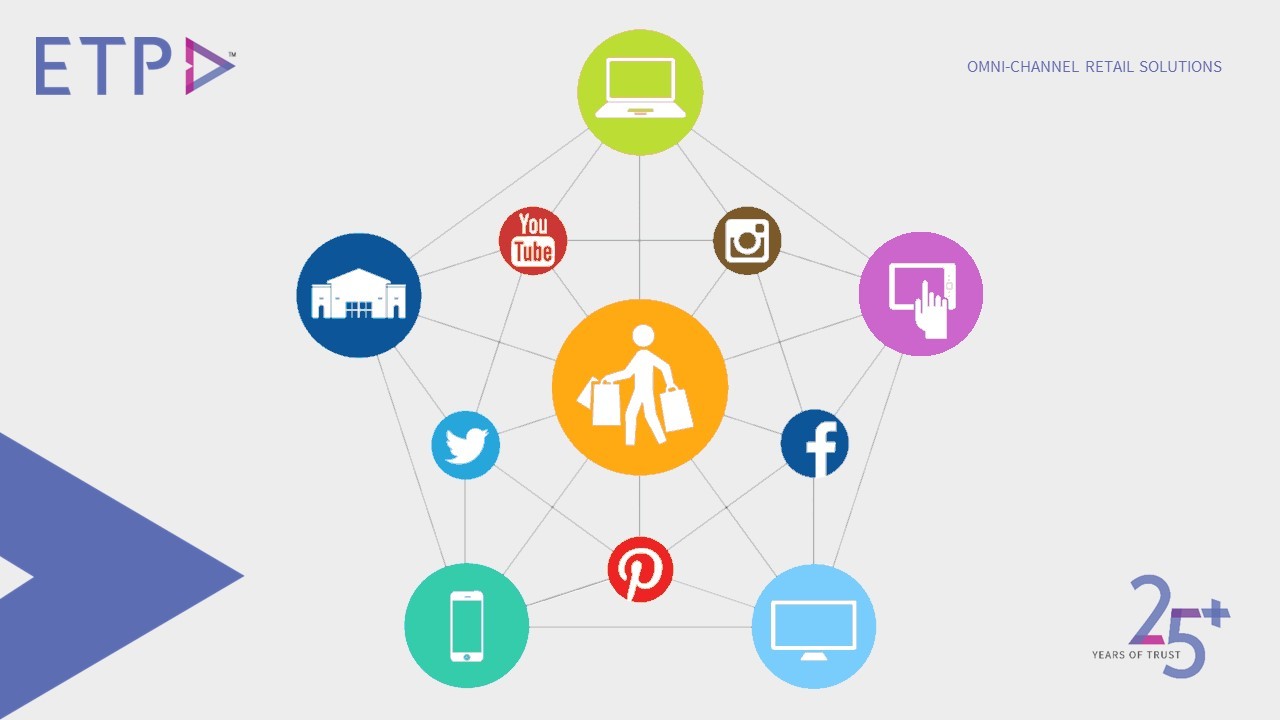
Meeting the complex expectations of the omni-channel shopper demands substantial investment in emerging and effective technologies. Let us look at the factors that are driving omni-channel growth before discussing the return on investment.
The number of smartphone subscriptions globally was 1.6 billion in 2013. According to a report produced by a leading mobile technology enterprise, this figure is expected to increase to 5.6 billion in 2019. 90% of the world’s population will then be able to access mobile Internet connections. This growth in Internet penetration and the immense increase in popularity of smartphones will only magnify omni-channel customer behavior exponentially. These trends point towards omni-channel being the only sustainable way of doing retail business in the future as ‘one-click shopping’ becomes a reality.
Innovation in technology is also driving the retailers’ interest in omni-channel retailing, supporting new capabilities in personalized consumer engagement. Advances in store digitization technologies, predictive logistics, virtual assistance, and customer recognition systems are game-changers. These new technologies have the potential to disrupt existing business models in the same way as e-Commerce disrupted traditional brick-and-mortar sales few years ago.
In future, diverse business models will be driven by the modern day consumer’s preferences. The point in case will be e-commerce giants who are trying to add physical presence to get closer to the customers. Meanwhile, brick-and-mortar retailers are adding online stores and also reinventing the customer experience and the role of their stores (for example, by using stores as fulfillment centers for online orders).
Social media is becoming an increasingly powerful sales and marketing channel. Online companies sit on a goldmine of rich consumer data and they can easily use this to customize offers and target consumers more effectively.
Thus today, technology enables consumers to be present anywhere and everywhere and to meet these consumers in their comfort zone, retailers need to be present wherever they are. For this, they need to invest in modern retail technologies that allow a seamless omni-channel customer experience.
Also Read: Four Emerging Trends In This Revolutionary Era Of Shopping
What retailers need to understand about the Omni-channel Customer Experience

Retail has undergone a major transformation in the digital age, and today customers demand better, quicker and seamless experiences. Therefore, brands need to provide omni-channel experiences that allow customers to engage from wherever they are – brick-and-mortar stores, mobile apps, online, kiosks, catalog and more.
However, simply operating multiple retail channels does not constitute an omni-channel strategy, unless done right. Today, customers may start in one channel and switch to another as they progress to a definite buying decision. Omni-channel implies making these complex ‘hand-offs’ between channels must be effortless for the customer.
Omni-channel is not just a mere buzzword. It is essentially a cluster of strategies that need to deliver results. So what do retailers need to know to create a superior omni-channel customer experience?
360° Omni-Channel Customer View
Collecting customer information such as shopping preferences, demographics, buying history, preferred modes of payment and so on is absolutely vital for creating a single unified view of the customer no matter which they use to research and purchase. When acquired, consolidated and leveraged fittingly, this analysis can provide a roadmap for retailers to define and deploy more personalised and effective communication and promotions, eliminating much of the guesswork.
Offer Consistent And Continuous Experiences
Today, consumers have instant access to an extensive range of buying options, they will not think twice while letting go of a brand in search of a superior experience. Even if one of the channels is lagging, the retailer will likely see a drop in customer loyalty. Hence, the value of a complete, continuous and consistency is priceless.
Leveraging Emerging Technologies
The right technology investment is vital to enabling an outstanding omni-channel customer experience. Retailers should equip their business operations with the right mix of emerging and effective technologies to fulfil consumers’ high expectations in this fast and frugal omni-channel age. Brands that can stay on the cutting edge of technology such as mobility, geo-targetting, smart devices for payments, augmented reality and many more are likely to emerge victorious.
While every retailer will bring a distinct omni-channel customer experience strategy to the table, brands will have to strive to provide a seamless, noteworthy customer experience across channels to meet consumer expectations.
Omni-Channel Retail Top 9 Strategic Priorities
WEDNESDAY, 27 JULY 2016
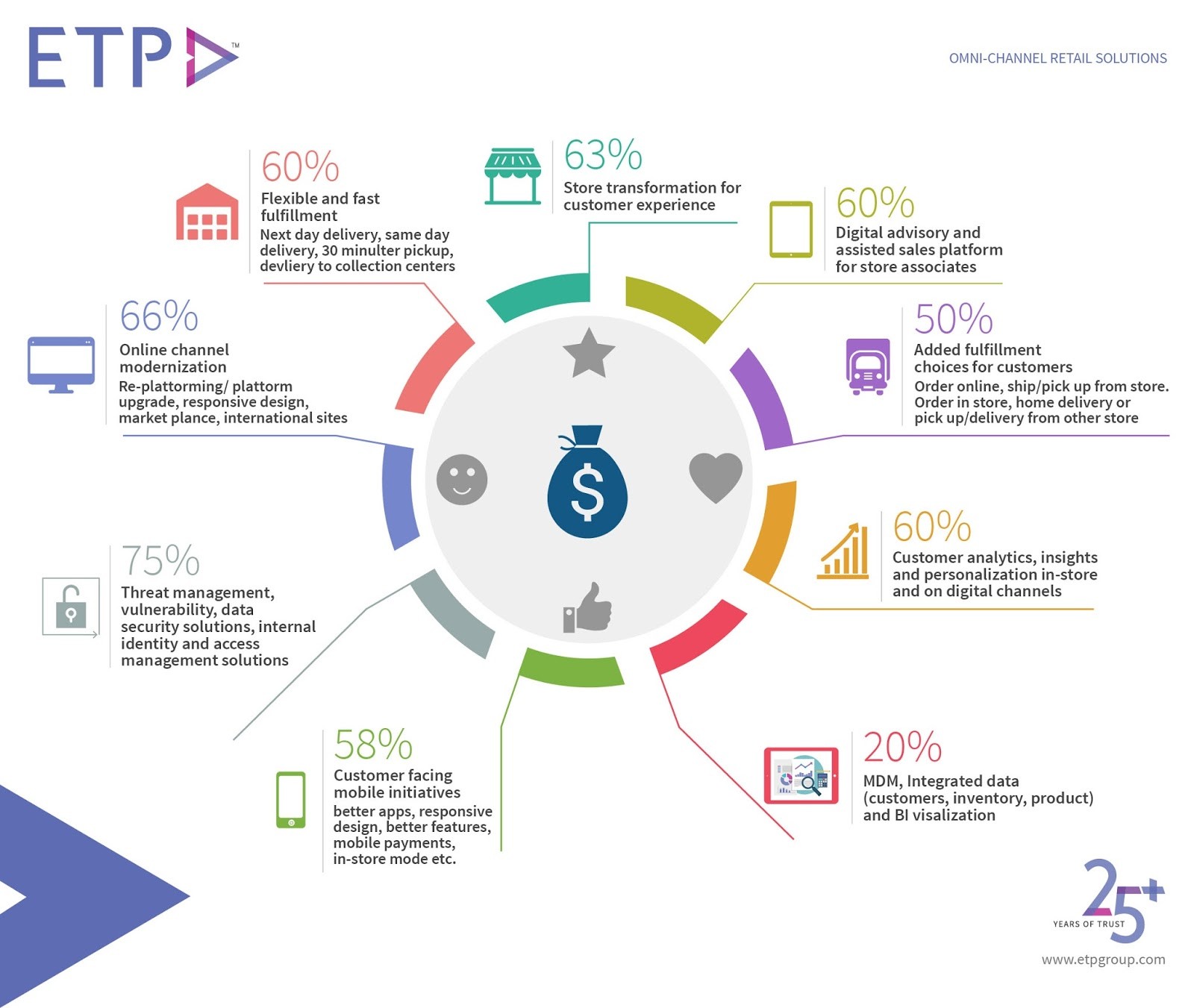
Is Your Retail Business Everywhere Every Time?
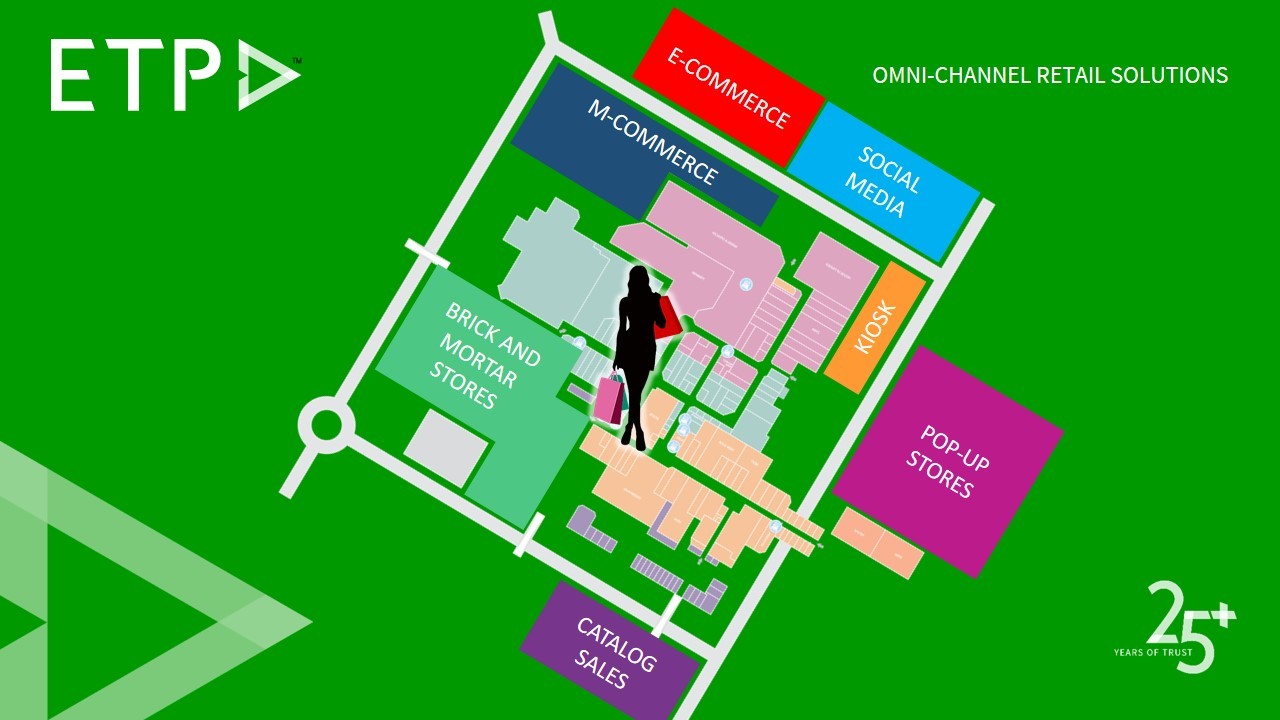
Consumers across the globe are shifting from their traditional shopping patterns and adapting to more modern, digitally driven methods of purchasing. This shift in the shopping behavior of new age consumers has been a game changer lately for the retail industry. Businesses have no choice but to accept this change and to adapt to it. And, the everlasting retail axiom ‘customer is king’ has never been truer than now. Retailers need to be cognizant of this and go out of their way to please them. Hence, the motto for any customer centric retail business should always be surpassing their customers’ expectations and not merely satisfying them.
With the tremendous influence of ‘omni-channel’ in retail, the biggest challenge lies in identifying customer preferences as to when, what, where and how they shop. The impulsive switching by customers between channels while researching or shopping can be overwhelming for retailers to keep track of, analyze and accordingly, make provisions for meeting the customer needs. If retailers are unable to match the pace of their customers’ arbitrariness or are not present when and where their customers want them to be, with all certainty, such retailers won’t be able to sustain for long, leave aside gaining profits.
Availability is the essence of being omni-channel, time and place being important factors. If retail brands don’t want to miss out on a single opportunity of interacting with their customer, they ought to be a business which is everywhere the customer is, and every time the customer wants. For example, if a brand conscious customer is looking for her favorite brand in a particular location but is unable to find it in a physical store there, the retail brand must ensure that the customer is still able to explore and purchase the products through an alternative medium. To go the extra mile, the brand may also deliver the goods at the customer doorstep. In simple words, retail businesses should be ‘everywhere’ ‘every time’!
Personalizing The Retail Customer Experience
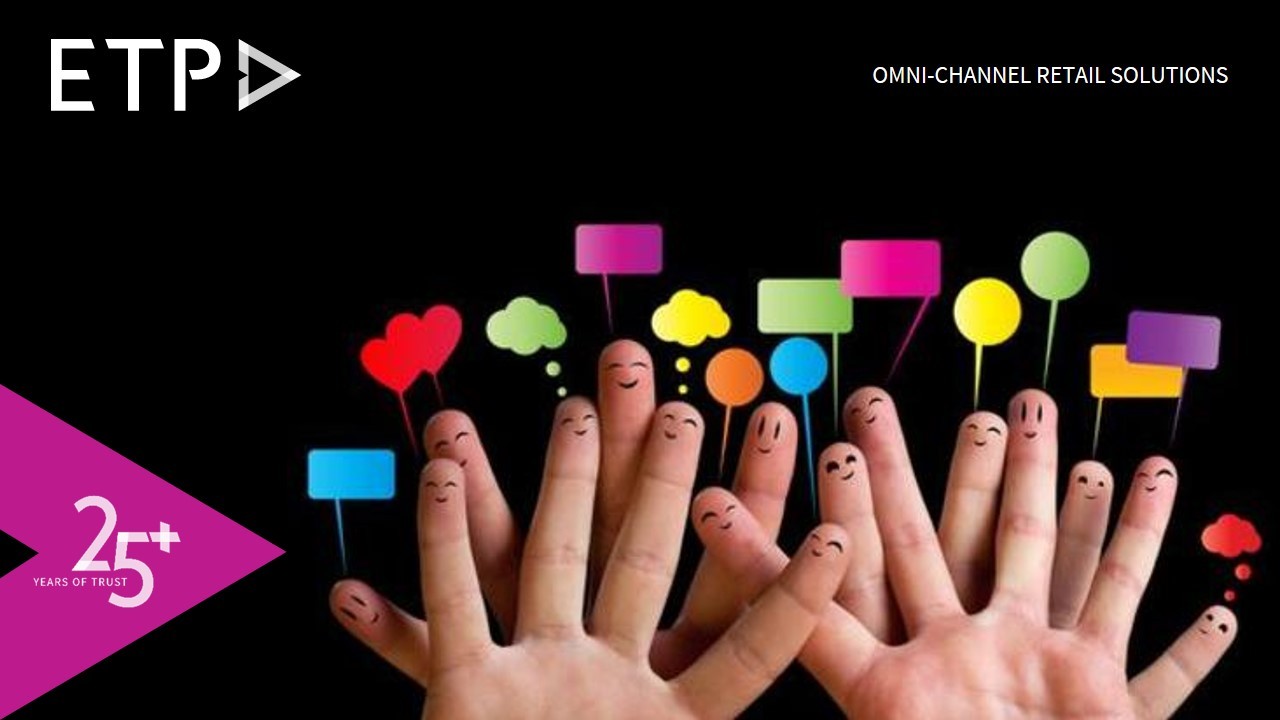
Retail success can be visualized as a two stage process. It is not just about getting a customer to enter the retail store or to access the e-commerce website to shop, but also closing the sale. And both these stages are potential challenges and battles that retailers need to win, thanks to the ever-growing and fierce competition.
Recent trends suggest that shoppers are constantly looking for offers and discounts, and are likely to make a purchase from retailers who sell merchandise at discounted prices or offer free shipping and so on. But that’s not it. Customers are also seeking more information regarding products and services that interest them. All this can be viewed by retailers as probable opportunities to offer something extra to their customers by making it more relevant and personalized.
Busy shoppers value quick reminders about the products that they had left in their shopping carts during their previous interactions or even about those that they may have been researching for or had shown interest in previously. Personalized offerings such as tailor-made discounts, promotions or other benefits, during auspicious occasions such as birthdays and anniversaries or social occasions such as festivals really go a long way in influencing the customers’ decisions while making their next purchase. Additionally, personalized messaging and recommendations provide customers with the information that will enable them to determine products that are the right fit for their needs. Information about frequently purchased products, merchandise that can be coupled either together or with special offers and discounts also persuades customers to make a purchase. Location based or proximity marketing such as in-store discounts or free shipping can appeal to shoppers, driving them to buy. A superior after sales service could go a long way in boosting shopper affiliation towards the retail brand further as being interactive and engaging with customers helps keep their interest sustained in the brand.
Personalization, if done appropriately and by being conscious of not overstepping limits, retailers can make the customers feel special and important. In a more customer-centric retail environment, where the focus is on the customer more than ever before, providing a personalized service that is valuable and memorable can unquestionably be the differentiating factor for customers to choose the retail brand they would want to be most associated with. As retailers streamline their omni-channel retail business operations and focus on enhancing the customer experience, customer profiling can enable retailers to understand their customers better to be able to offer them a personalized shopping experience.
Also Read: Omni-Channel Success: Bridging Gap Between Customer Expectations And Omni-Channel Retail Execution
Infographic: Omni-Channel Retail Insights
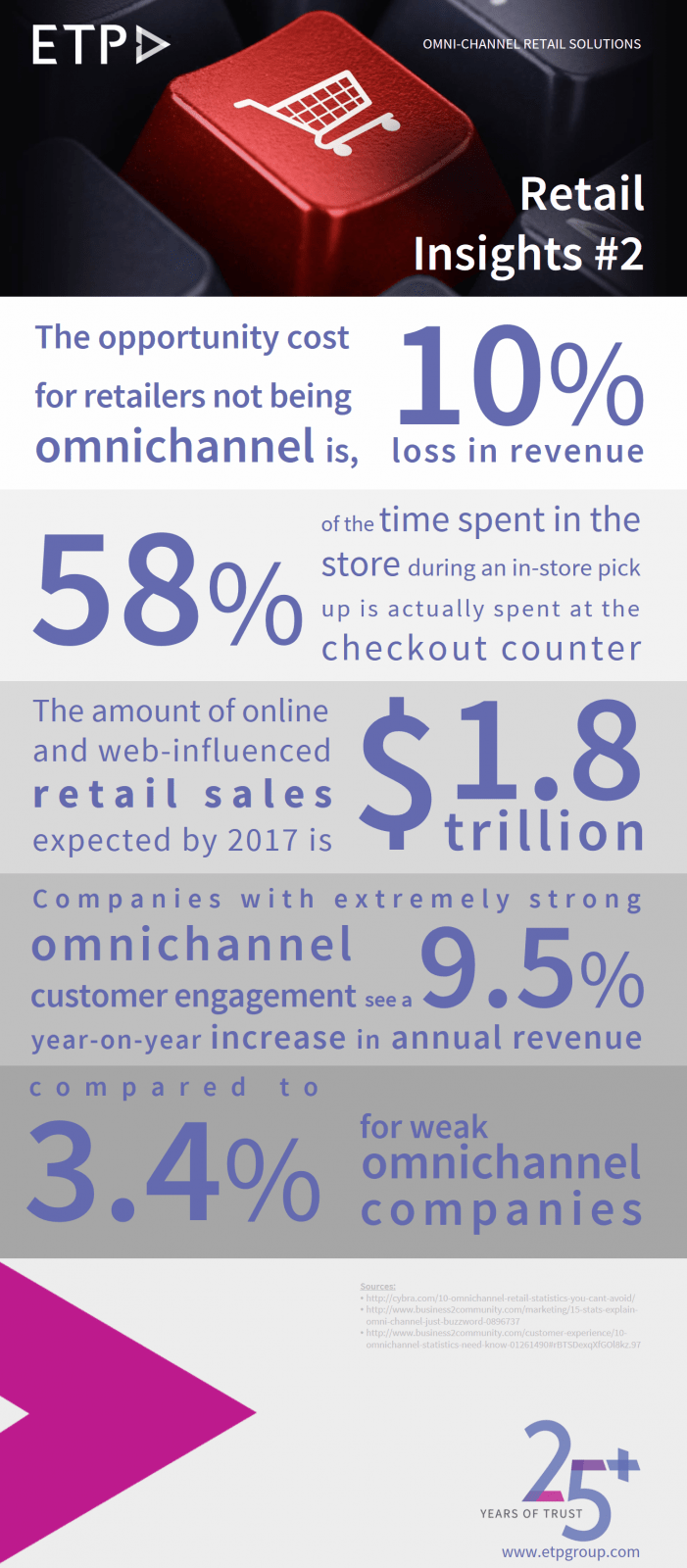
Emerging Retail Trends In Southeast Asia
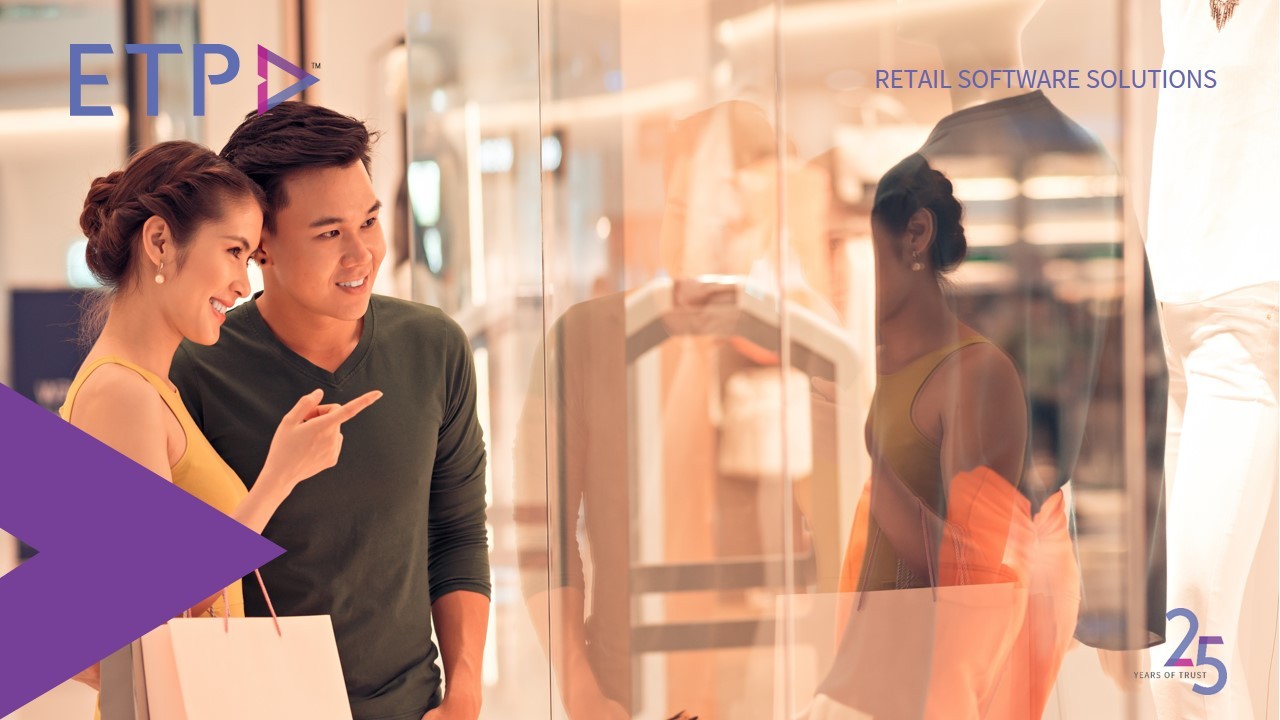
The retail markets of Southeast Asia today offer a range of opportunities, depending on investor appetite for risk and maturity. Favourable demographics including a young earning population and the region’s high tourism potential contributes to rapidly growing economies and mature retail markets that in turn lead to the creation of new shopping venues of all shapes and sizes. In the coming years, as the region’s consumers become more affluent and its cities expand, following are the top retail trends in Southeast Asia:
Personalization
Consumers today expect quick and personalized customer service. They expect retailers to deliver a wider range of products, faster, through meaningful and targeted mediums. Omni channel retail technology allows retailers to know exactly where their inventory is, to whom they can make it available and when it will get there, regardless of which channel is calling for it. This helps retailers to offer the best level of service to their customers.
Integrated back-and front-end systems
Retailers in Southeast Asia will continue to focus on ensuring their back-end supply chain operations are fully optimized and streamlined and are aligned and synchronized with their store/online operations and associated front-end systems. This will help improve product availability and order accuracy, reduce fulfilment costs, and improve service levels.
Fast and flexible fulfilment
Few retailers in Southeast Asia are currently offering next day delivery to customers, two-hour click-and-collect, or ship-from-store services. For this to be possible, retailers need to have a 360 view of their channels and maintain accurate demand planning. Omni-channel retailers with this level of insight into their inventory and customers will seamlessly control product, people and processes to dispatch and fulfil orders quickly and profitably.
Social shopping
The increased use of instant messaging platforms and m-commerce in Southeast Asian countries will see more shoppers embracing social shopping. The next development will involve retailers using social channels to take customer orders. The retailers who succeed in this difficult market will probably be those who see social media as a viable retail platform.
Hyper targeting
Big data analytics in retail has advanced immensely, making it possible to track customer transactions, online conversations and shopping habits in real-time. Through this, brands can understand better how to service their customers and engage them sustainably.
Top CEOs Redefining The Rules For New Age Retail
Nike CEO Mark Parker talks about being the Goliath in a David market. “The last thing we want is to be a big dumb company that feels we can put a swoosh on something and people will buy that. Our management approach hasn’t come from studying and reading business books. It’s more intuitive, from the culture of sports. We’re constantly looking for ways to improve. How do you adapt to your environment and really focus on your potential? To really go after that, you have to embrace the reality that it is not going to slow down. And you have to look at that as half full, not half empty. Companies and people look at the pace of change as a challenge, an obstacle, a hurdle, we like to look at it as opportunity: Get on the offense.”
Speaking on the changing landscape of retail, Macy’s Inc. CEO Terry Lundgren isn’t losing sleep over how he’s running a retail empire in an age of booming internet-based commerce. He says “A bifurcated view of the retail environment – one in which brick-and-mortar retailers fight against a rising tide of internet retailers – doesn’t paint an accurate picture of how the average retailer shops. Rather, at least for Macy’s, the two are complementary tools used by consumers. The customer starts with a device, then they want to touch the product or sit in the sofa. Afterwards, they might walk out of the store and buy it online.”
Omni-channel retailing has become the norm in the industry and customers expect access to retail brands through multiple channels as per their convenience. The physical and digital platforms are blending to create an ecosystem that delivers instant value, information, products, services, payment options, rewards, cash-back, discounts, recommendations and updates to the customer anytime, anywhere. Walmart’s CEO Doug McMillon, elaborates further, “I want us to stop talking about digital and physical retail as if they’re two separate things. The customer doesn’t think of it that way, and we can’t either. One customer can shop with us in so many different ways – in stores, on their phones, at homes or a pick-up point. I get excited about what our technology team is now capable of. As we add new capabilities and join these unique assets together effectively, we’re going to have something special.”
A Millennial Match Made In Retail Heaven!
The term ‘Millennial Retail’ seems to gather popularity and confusion in equal parts. Suddenly one finds themselves floating neck deep in ‘quick-fix-home-grown’ millennial solutions which threaten to make necessary relevance rhetorical! But the right retail technology applied through the right business practices can help navigate these choppy waters and turn the tide to one’s advantage, harnessing the industry potential that lies within this world-wide phenomena.
Industry experts project one-third of the global retail revenue to be contributed through the millennial generation by Y2020. The good news is, this number will permanently be on an upward trend hereon. But the challenge lies in managing expectations.
Millennials expect quick service, this is often the key distinction between a sale and no sale situation. Apparently, patience is not a virtue to hold dearly in the new age. Retailers are beginning to understand that their in-store experience is only as good as the customer wait-time it reduces. Quick Billing and express counters ensure the instant gratification millennials seek. Your POS stations are battle grounds combating the biggest deterrent to your conversion ratios. This means there is no down-time and service continues even in offline mode.
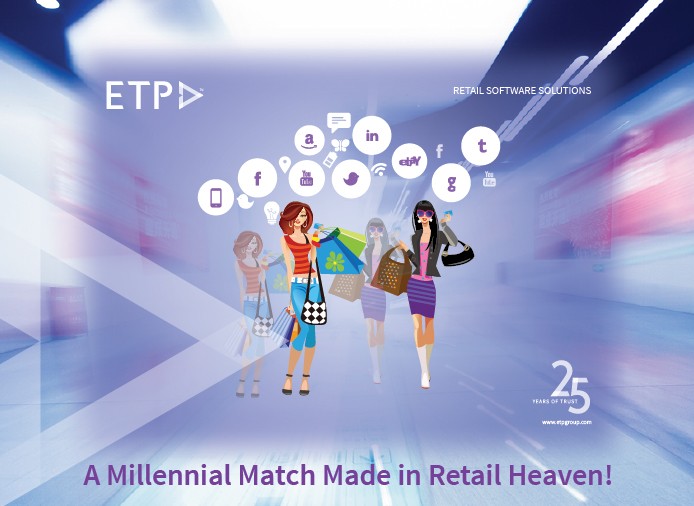
A personalized shopping experience has the multi-fold effect possible almost exclusively through millennials. Since they are more open to share information about their preferences and often know exactly what they want, you populate your CRM database with more accurate data. This leads to better promotions and developing key value-add services that make your brand personable and closer to your customers. Also, help spread the love! 19 out 20 millennials (globally) own smartphones and are active on social media. That makes for a lot of first impressions, daily, through multiple networking and information sharing sites.
As a group, millennials favor engaging with companies and brands on social media and also prefer receiving hyper targeted content. With sales soaring as a result of positive social media influence, it is no wonder that most marketing budgets today are skewed towards building an omni-channel presence for their organization. So when your customers exit your store, they still carry your brand experience (quite literally) with them, on their smartphones, tablets and laptops. Within the store, the staff uses a similar mobility to lookup customer info, frequency-regency of purchase, buying history like preferred products and payment modes. They now hold the right information to help customers make better choices, deliver value through applicable promotions, up/cross-sell and conclude the transaction from anywhere in the store. Again saving their time and fortifying customer loyalty which induces and influences more people to try your products and services.
It is important to note that although the retail market is a dynamic arena, the millennial trend has pushed to permanence certain course correcting measures which were inevitable. They include striking a better balance between demand and supply, optimizing supply with better visibility and control over production, process and people to satisfy and supplement existing demand. A centralized data management system enables you to analyze better, faster and get that much closer to your yearly projections. The necessary operational overhaul, in reality, has led a more enlightened practice and pace of doing business. And you are sure to be the quickest to the draw, with those young guns at your side.
Also Read: 5 Questions – Before Investing In Retail Business Intelligence (BI)

